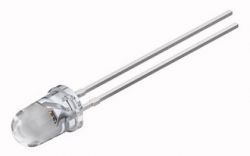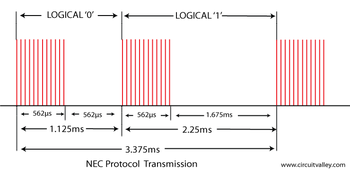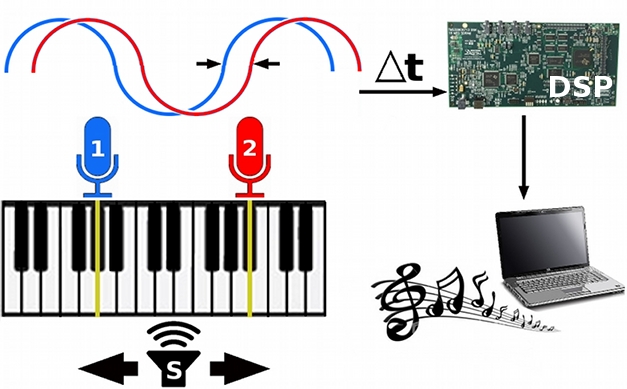| 2021-2022 | ||

|
Finding mines with a drone with a ground-penetrating radar De Belli Davide, Gunbardhi Arbi, Mocchiutti Giulia |
|

|
Monitor fields and greenhouses with Low-cost IoT Ivan Di Betta, Klaid Shyti, Lorenzo Zaccomer |
|

|
Smart Mirror No abstract available A mirror that displays info you could access only from your smartphone. Bernardi Thomas, Gerussi Enrico |
|
| 2020-2021 | ||

|
|
|
| 2019-2020 | ||

|
Steganographic phone No abstract available A secure phone service Zampieri Sara, Drius Andrea, Marini Matteo |
|
| 2018-2019 | ||

|
Fell free to speak to me and I'll help you Emanuele Flebus, Marco Iuri, Brendon Kasi |
|
| Keep track of the time spent in different activities Deana Riccardo, Fabbro Pierluigi |
|
|

|
This Octahedron will help you keeping track of your activities Nicholas Bon, Alessio Cortiula, Alessio De Prà, Federico Spagnolo |
|

|
Augmented reality digital scope for aiming in low-visibility conditions Fornasier Alessandro, Marcon Mattia, Mazzer Simone, Zannier Giulio |
|
| IoT solar light tracking system with real-time reports for production and meteorological data Canzian Alessandro |
|
|

|
Smart price tag updated with visible light communication Giovanni Della Rovere, Mattia Segatto |
|
| 2017-2018 | ||

|
Cuffie Attive Antirumore No abstract available Cancel selectively strong, impulsive noise (e.g., shots) Davide Pin, Scapol Marco |
|

|
Adaptive headphones that cancel only impulsive noise like shots Dylan D'ampolo, Stefano Pota, Giancarlo He |
|

|
Mine searching with a drone equipped with a ground-penetrating radar Riccardo Fontanini, Chiara Bergagnini |
|

|
Hiding, transmitting and retrieving an URL through audio (e.g., for double-screen viewing) Francesca Rosset |
|
| 2016-2017 | ||

|
Universal remote controller with Arduino Leonardo Meneghin |
|

|
Recover biological sample shape from impedence measurements Pitassi Silvano, Iurich Mattia, Hoxha Aldi |
|

|
Orient yourself in space via image processing Leonardo Vianello, Massimiliano Biason, Eros Reato |
|

|
Automatic microphone control for teleconferences Moretti Simone, Michelotti Luca |
|
| 2015-2016 | ||
|
||

|
Coordinate the power consumption of your appliances Riccardo Barbon, Alberto Molinari |
|

|
|
|
| 2014-2015 | ||

|
Video follower No abstract available Follow automatically the teacher during a streaming lesson Mattia Dal Ben, Manuel Guglielmini |
|

|
Video follower 2 No abstract available Follow the teacher during a streamed lesson Dazzi Martino, Mele Leandro Julian, Pilotto Alessandro |
|

|
Virtual graphic tablet No abstract available Use a pointer and pretend to have a graphic tablet Sist Paolo |
|
| 2013-2014 | ||

|
Cassa Intelligente No abstract available Take your loudspeaker where you want and listen from any source in your home Pangallo Bruno Mirko, Tumaini Francesco, Urban Cristiano |
|

|
Thermostat No abstract available Control your thermostat remotly and minimize energy consumption Alessandro Brisotto, Luca Francescon, Mattia Guacci, Davide Righini |
|
| 2012-2013 | ||

|
Mouse 3D No abstract available Navigate your virtual world in an intuitive way Edotti Andrea, Errante Matteo, Simonetti Michele, Tonetto Enrico |
|

|
Solar-powered PC No abstract available A low-power laptop powered by sunlight Ferigo Diego, Kapidani Bernard |
|

|
Submarine No abstract available A unmanned, underwater remotely operated veichle (ROV) Roberto Cheng Hivai, Stefano Colonna, Andrea Locatelli, Michele Scarsini, Andrea Cossettini, Tommaso Rollo |
|
| 2010-2011 | ||

|
Virtual Piano No abstract available Play a virtual piano with a fake keyboard Alessandro Biason, Giulia Giordano, Christian Olsen, Federico Pever, Stefano Venica |
|

|
Virtual Piano No abstract available Play a virtual piano with a fake keyboard and an ultrasound source Marco Cagnelutti, Elvis Kapllaj, Marco Gava |
|

At the end of the course of Information Engineering Lab the students are required to turn in their report in the form of a small web site
This page collects the links to the sites developed by the students, sorted by academic year. The sites are as they have been turned in, without any change done by teachers

